-
63articlesSort byLatested
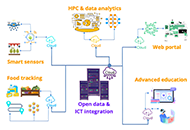 From data to nutrition: the impact of computing infrastructure and artificial intelligenceOpen AccessPerspectiveThis article explores the significant impact that artificial intelligence (AI) could have on food safety and nutrition, with a specific focus on the use of machine learning and neural networks for d...Pierpaolo Di Bitonto ... Sabina TangaroPublished: December 03, 2024 Explor Foods Foodomics. DOI: 10.37349/eff.2024.00063
From data to nutrition: the impact of computing infrastructure and artificial intelligenceOpen AccessPerspectiveThis article explores the significant impact that artificial intelligence (AI) could have on food safety and nutrition, with a specific focus on the use of machine learning and neural networks for d...Pierpaolo Di Bitonto ... Sabina TangaroPublished: December 03, 2024 Explor Foods Foodomics. DOI: 10.37349/eff.2024.00063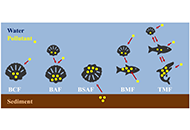 Bioaccumulation of environmental pollutants and marine toxins in bivalve molluscs: a reviewOpen AccessReviewSeafood is both nutritionally and economically significant, with bivalve molluscs being particularly valuable for monitoring environmental pollutants due to their filter-feeding nature and ability t...Clara Ochoa-Esteso ... María Jesús Lerma-GarcíaPublished: December 03, 2024 Explor Foods Foodomics. DOI: 10.37349/eff.2024.00062
Bioaccumulation of environmental pollutants and marine toxins in bivalve molluscs: a reviewOpen AccessReviewSeafood is both nutritionally and economically significant, with bivalve molluscs being particularly valuable for monitoring environmental pollutants due to their filter-feeding nature and ability t...Clara Ochoa-Esteso ... María Jesús Lerma-GarcíaPublished: December 03, 2024 Explor Foods Foodomics. DOI: 10.37349/eff.2024.00062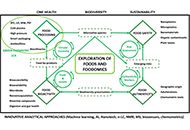 Future trends in Food Science and Foodomics: a perspective view by the Editorial Team of Exploration of Foods and FoodomicsOpen AccessPerspectiveIn this perspective article, several internationally recognized experts, members of the editorial team of this journal, discuss a selection of current hot topics identified in Food Science and Foodo...Elena Ibáñez ... Alejandro CifuentesPublished: November 28, 2024 Explor Foods Foodomics. DOI: 10.37349/eff.2024.00060
Future trends in Food Science and Foodomics: a perspective view by the Editorial Team of Exploration of Foods and FoodomicsOpen AccessPerspectiveIn this perspective article, several internationally recognized experts, members of the editorial team of this journal, discuss a selection of current hot topics identified in Food Science and Foodo...Elena Ibáñez ... Alejandro CifuentesPublished: November 28, 2024 Explor Foods Foodomics. DOI: 10.37349/eff.2024.00060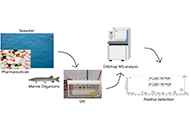 Detection of pharmaceuticals and their transformation products in seawaters using off-line solid phase extraction and liquid chromatography-high resolution mass spectrometryOpen AccessOriginal ArticleAim: Fast urbanization of free land, industrial progress, and improvement of human life quality, have led to increased consumption of different chemical substances recognized as emerging contaminants (ECs) that are chemicals posing potential risks to the environment and human health, but are not yet subjected to regulatory criteria. Pharmaceuticals consumed by humans are continuously discharged into aquatic environments through urban effluents and numerous classes of them have been widely detected in surface waters. We have to highlight that pharmaceuticals, deposited in the aquatic environment end up in human body through the consumption of marine organisms. Consequently, seawater can be considered as feed. Aim of the study is the development, optimization and validation of a multi-residue analytical method concerning the detection of pharmaceuticals in seawaters....Aggeliki Kalogeropoulou ... Triantafyllos AlbanisPublished: November 29, 2024 Explor Foods Foodomics. DOI: 10.37349/eff.2024.00061
Detection of pharmaceuticals and their transformation products in seawaters using off-line solid phase extraction and liquid chromatography-high resolution mass spectrometryOpen AccessOriginal ArticleAim: Fast urbanization of free land, industrial progress, and improvement of human life quality, have led to increased consumption of different chemical substances recognized as emerging contaminants (ECs) that are chemicals posing potential risks to the environment and human health, but are not yet subjected to regulatory criteria. Pharmaceuticals consumed by humans are continuously discharged into aquatic environments through urban effluents and numerous classes of them have been widely detected in surface waters. We have to highlight that pharmaceuticals, deposited in the aquatic environment end up in human body through the consumption of marine organisms. Consequently, seawater can be considered as feed. Aim of the study is the development, optimization and validation of a multi-residue analytical method concerning the detection of pharmaceuticals in seawaters....Aggeliki Kalogeropoulou ... Triantafyllos AlbanisPublished: November 29, 2024 Explor Foods Foodomics. DOI: 10.37349/eff.2024.00061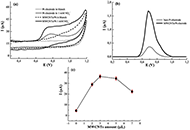 Electrochemical sensing of nitrite in drinking water using multi-walled carbon nanotubes modified platinum electrodeOpen AccessOriginal ArticleAim: The scope of the present study was to elaborate a nitrite electrochemical sensor using multi-walled carbon nanotubes (MWCNTs) modified Pt electrode. Methods: The electrocatalytic activ...Merzak Doulache ... Sibel A. OzkanPublished: November 18, 2024 Explor Foods Foodomics. DOI: 10.37349/eff.2024.00057
Electrochemical sensing of nitrite in drinking water using multi-walled carbon nanotubes modified platinum electrodeOpen AccessOriginal ArticleAim: The scope of the present study was to elaborate a nitrite electrochemical sensor using multi-walled carbon nanotubes (MWCNTs) modified Pt electrode. Methods: The electrocatalytic activ...Merzak Doulache ... Sibel A. OzkanPublished: November 18, 2024 Explor Foods Foodomics. DOI: 10.37349/eff.2024.00057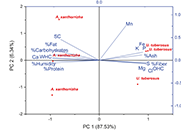 Proximal characteristics, phenolic compounds profile, and functional properties of Ullucus tuberosus and Arracacia xanthorrhizaOpen AccessOriginal ArticleAim: The Andean tubers Ullucus tuberosus and Arracacia xanthorrhiza are of great international importance due to their nutritional value (carbohydrates, fiber), functional and phenolic compounds....Steffanny Sanchez-Portillo ... Raúl Rodríguez-HerreraPublished: November 18, 2024 Explor Foods Foodomics. DOI: 10.37349/eff.2024.00058
Proximal characteristics, phenolic compounds profile, and functional properties of Ullucus tuberosus and Arracacia xanthorrhizaOpen AccessOriginal ArticleAim: The Andean tubers Ullucus tuberosus and Arracacia xanthorrhiza are of great international importance due to their nutritional value (carbohydrates, fiber), functional and phenolic compounds....Steffanny Sanchez-Portillo ... Raúl Rodríguez-HerreraPublished: November 18, 2024 Explor Foods Foodomics. DOI: 10.37349/eff.2024.00058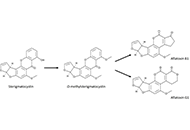 Analytical methodologies for the determination of sterigmatocystin in food and current concentration levelsOpen AccessReviewSterigmatocystin (STE) is a possible human carcinogenic compound (2B) according to the International Agency for Research on Cancer classification. Structurally, STE is a precursor to aflatoxins, sha...Olga Pardo, Francesc A. Esteve-TurrillasPublished: November 18, 2024 Explor Foods Foodomics. DOI: 10.37349/eff.2024.00059
Analytical methodologies for the determination of sterigmatocystin in food and current concentration levelsOpen AccessReviewSterigmatocystin (STE) is a possible human carcinogenic compound (2B) according to the International Agency for Research on Cancer classification. Structurally, STE is a precursor to aflatoxins, sha...Olga Pardo, Francesc A. Esteve-TurrillasPublished: November 18, 2024 Explor Foods Foodomics. DOI: 10.37349/eff.2024.00059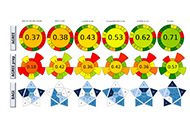 Sustainability assessment in food analysis: the application of Green Analytical Chemistry tools to phthalate residue analysis in edible oilsOpen AccessShort CommunicationEdible oils are essential in daily diet due to their high contribution of fatty acids, fat-soluble vitamins, and triglycerides. During the processes of growing, processing, storage, transport, or pa...Daniel Gallart-MateuPublished: November 12, 2024 Explor Foods Foodomics. DOI: 10.37349/eff.2024.00056
Sustainability assessment in food analysis: the application of Green Analytical Chemistry tools to phthalate residue analysis in edible oilsOpen AccessShort CommunicationEdible oils are essential in daily diet due to their high contribution of fatty acids, fat-soluble vitamins, and triglycerides. During the processes of growing, processing, storage, transport, or pa...Daniel Gallart-MateuPublished: November 12, 2024 Explor Foods Foodomics. DOI: 10.37349/eff.2024.00056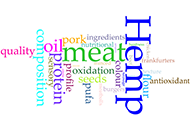 Review of hemp components as functional feed and food ingredients: impact on animal product quality traits and nutritional valueOpen AccessReviewThis review examined the potential of hemp components as functional feed and food ingredients, focusing on their impact on the quality and nutritional value of animal products. Following hemp legali...Georgios Papatzimos, Eleni KasapidouPublished: November 11, 2024 Explor Foods Foodomics. DOI: 10.37349/eff.2024.00055
Review of hemp components as functional feed and food ingredients: impact on animal product quality traits and nutritional valueOpen AccessReviewThis review examined the potential of hemp components as functional feed and food ingredients, focusing on their impact on the quality and nutritional value of animal products. Following hemp legali...Georgios Papatzimos, Eleni KasapidouPublished: November 11, 2024 Explor Foods Foodomics. DOI: 10.37349/eff.2024.00055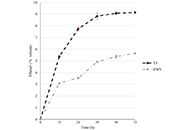 Exploring the potential of triticale lines for bioethanol productionOpen AccessOriginal ArticleAim: Triticale is a well adaptable crop, tolerant of disease and abiotic stresses, and able to grow with good yields even in poor soil, thus representing a good choice to develop a new industrial...Arianna Latini ... Patrizia GaleffiPublished: October 21, 2024 Explor Foods Foodomics. DOI: 10.37349/eff.2024.00054
Exploring the potential of triticale lines for bioethanol productionOpen AccessOriginal ArticleAim: Triticale is a well adaptable crop, tolerant of disease and abiotic stresses, and able to grow with good yields even in poor soil, thus representing a good choice to develop a new industrial...Arianna Latini ... Patrizia GaleffiPublished: October 21, 2024 Explor Foods Foodomics. DOI: 10.37349/eff.2024.00054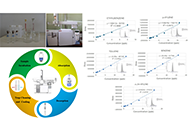 In-tube extraction dynamic headspace coupled to gas chromatography-mass spectrometry for the sensitive analysis of volatile compounds in aqueous samplesOpen AccessOriginal ArticleAim: Volatile organic compounds (VOCs) are often human-made contaminants used and generated in the manufacturing of numerous products, presenting notable environmental and health hazards. Therefo...Eleni Zymvrakaki ... Urania Menkissoglu-SpiroudiPublished: October 12, 2024 Explor Foods Foodomics. DOI: 10.37349/eff.2024.00053
In-tube extraction dynamic headspace coupled to gas chromatography-mass spectrometry for the sensitive analysis of volatile compounds in aqueous samplesOpen AccessOriginal ArticleAim: Volatile organic compounds (VOCs) are often human-made contaminants used and generated in the manufacturing of numerous products, presenting notable environmental and health hazards. Therefo...Eleni Zymvrakaki ... Urania Menkissoglu-SpiroudiPublished: October 12, 2024 Explor Foods Foodomics. DOI: 10.37349/eff.2024.00053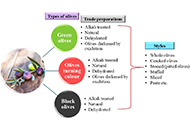 Analytical aspects of metagenomic and volatilomic approaches that advance table olive integrity researchOpen AccessReviewTable olives are one of the most widespread fermented foods in the Mediterranean area, presenting an exponential increase in global consumption in the latest years. As a fermented product, its micro...Despoina Langari, Fani Th. MantzouridouPublished: September 26, 2024 Explor Foods Foodomics. DOI: 10.37349/eff.2024.00052
Analytical aspects of metagenomic and volatilomic approaches that advance table olive integrity researchOpen AccessReviewTable olives are one of the most widespread fermented foods in the Mediterranean area, presenting an exponential increase in global consumption in the latest years. As a fermented product, its micro...Despoina Langari, Fani Th. MantzouridouPublished: September 26, 2024 Explor Foods Foodomics. DOI: 10.37349/eff.2024.00052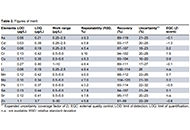 Inorganic contaminants and micronutrients in foods consumed by the vegetarian Portuguese populationOpen AccessOriginal ArticleAim: The present study aimed to determine the profile of micronutrients and inorganic contaminants in the plant-based and dairy food products most consumed by the Portuguese population. Meth...Sandra Gueifão ... Inês CoelhoPublished: September 24, 2024 Explor Foods Foodomics. DOI: 10.37349/eff.2024.00051
Inorganic contaminants and micronutrients in foods consumed by the vegetarian Portuguese populationOpen AccessOriginal ArticleAim: The present study aimed to determine the profile of micronutrients and inorganic contaminants in the plant-based and dairy food products most consumed by the Portuguese population. Meth...Sandra Gueifão ... Inês CoelhoPublished: September 24, 2024 Explor Foods Foodomics. DOI: 10.37349/eff.2024.00051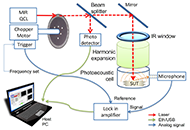 Exploring the potential of laser photoacoustic spectroscopy (LPAS) for predicting amylose content in rice flourOpen AccessOriginal ArticleAim: Rice, one of the most widely consumed staple foods globally, relies on amylose content for its quality, impacting cooking, digestibility, and health properties. Conventional amylose determin...Florinda Artuso ... Fabio PollastronePublished: September 10, 2024 Explor Foods Foodomics. DOI: 10.37349/eff.2024.00050
Exploring the potential of laser photoacoustic spectroscopy (LPAS) for predicting amylose content in rice flourOpen AccessOriginal ArticleAim: Rice, one of the most widely consumed staple foods globally, relies on amylose content for its quality, impacting cooking, digestibility, and health properties. Conventional amylose determin...Florinda Artuso ... Fabio PollastronePublished: September 10, 2024 Explor Foods Foodomics. DOI: 10.37349/eff.2024.00050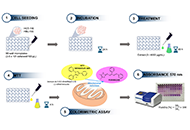 In vitro cytotoxicity assessment of phenolic extracts from grapevine bunch stem and cane by-products for their potential use as phytotherapeutic agentsOpen AccessOriginal ArticleAim: In the present study, bunch stem and cane extracts (Vitis vinifera L. cv. Malbec) rich in phenolic compounds (PCs) like flavonoids, phenolic acids, and stilbenes are studied as potential ant...Susana Ferreyra ... Ariel FontanaPublished: September 02, 2024 Explor Foods Foodomics. DOI: 10.37349/eff.2024.00049
In vitro cytotoxicity assessment of phenolic extracts from grapevine bunch stem and cane by-products for their potential use as phytotherapeutic agentsOpen AccessOriginal ArticleAim: In the present study, bunch stem and cane extracts (Vitis vinifera L. cv. Malbec) rich in phenolic compounds (PCs) like flavonoids, phenolic acids, and stilbenes are studied as potential ant...Susana Ferreyra ... Ariel FontanaPublished: September 02, 2024 Explor Foods Foodomics. DOI: 10.37349/eff.2024.00049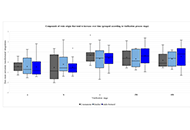 Exploring the effect of Pinus halepensis resin quality on the vinification of Retsina by untargeted profile analysisOpen AccessOriginal ArticleAim: Three factors that affect the chemical composition and perceptible aroma of Retsina—a distinguished Greek wine, crafted by infusing resin harvested from the Aleppo pine (Pinus halepensis M...Alexandros Nakas ... Andreana N. AssimopoulouPublished: August 29, 2024 Explor Foods Foodomics. DOI: 10.37349/eff.2024.00048
Exploring the effect of Pinus halepensis resin quality on the vinification of Retsina by untargeted profile analysisOpen AccessOriginal ArticleAim: Three factors that affect the chemical composition and perceptible aroma of Retsina—a distinguished Greek wine, crafted by infusing resin harvested from the Aleppo pine (Pinus halepensis M...Alexandros Nakas ... Andreana N. AssimopoulouPublished: August 29, 2024 Explor Foods Foodomics. DOI: 10.37349/eff.2024.00048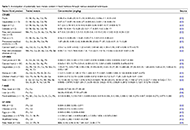 Assessing the presence and health risks of potentially toxic metals in food: a comprehensive overviewOpen AccessReviewFood products can contain various substances, including essential nutrients, as well as non-nutritive elements and potentially toxic metals. Metal contaminants have the potential to accumulate withi...Gabriel Mustatea, Elena L. UngureanuPublished: August 19, 2024 Explor Foods Foodomics. DOI: 10.37349/eff.2024.00047
Assessing the presence and health risks of potentially toxic metals in food: a comprehensive overviewOpen AccessReviewFood products can contain various substances, including essential nutrients, as well as non-nutritive elements and potentially toxic metals. Metal contaminants have the potential to accumulate withi...Gabriel Mustatea, Elena L. UngureanuPublished: August 19, 2024 Explor Foods Foodomics. DOI: 10.37349/eff.2024.00047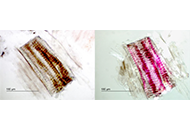 A feasible procedure to detect widespread wrong labeling of Ashwagandha root extracts in dietary supplementsOpen AccessOriginal ArticleAim: Ashwagandha is a widely recognized medicinal plant in Ayurveda, a traditional Indian system of medicine. These extracts, which are concentrated forms of the root, contain specified withanoli...Bernhard Thalhamer ... Wolfgang BuchbergerPublished: August 16, 2024 Explor Foods Foodomics. DOI: 10.37349/eff.2024.00046
A feasible procedure to detect widespread wrong labeling of Ashwagandha root extracts in dietary supplementsOpen AccessOriginal ArticleAim: Ashwagandha is a widely recognized medicinal plant in Ayurveda, a traditional Indian system of medicine. These extracts, which are concentrated forms of the root, contain specified withanoli...Bernhard Thalhamer ... Wolfgang BuchbergerPublished: August 16, 2024 Explor Foods Foodomics. DOI: 10.37349/eff.2024.00046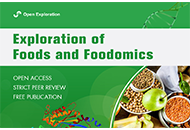 AI-powered revolution in plant sciences: advancements, applications, and challenges for sustainable agriculture and food securityOpen AccessReviewArtificial intelligence (AI) is revolutionizing plant sciences by enabling precise plant species identification, early disease diagnosis, crop yield prediction, and precision agriculture optimizatio...Deependra Kumar Gupta ... Ajay Kumar SinghPublished: August 06, 2024 Explor Foods Foodomics. DOI: 10.37349/eff.2024.00045
AI-powered revolution in plant sciences: advancements, applications, and challenges for sustainable agriculture and food securityOpen AccessReviewArtificial intelligence (AI) is revolutionizing plant sciences by enabling precise plant species identification, early disease diagnosis, crop yield prediction, and precision agriculture optimizatio...Deependra Kumar Gupta ... Ajay Kumar SinghPublished: August 06, 2024 Explor Foods Foodomics. DOI: 10.37349/eff.2024.00045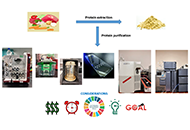 Separation methods for food protein purification and analysisOpen AccessReviewThe extraction, separation, and purification of dietary proteins from a variety of food sources are crucial for their targeted use in food applications. To achieve this, proteins should be effectively separated from non-protein components such as cell wall structures, polysaccharides, and lipids. Traditional protein purification methods can be time-consuming, highlighting the need for automated, cost-effective, and sustainable alternatives. This comprehensive review critically assesses various protein purification instruments from an analytical perspective, weighing their advantages and disadvantages. The methods under evaluation include ultrafiltration, sodium dodecyl sulfate-polyacrylamide gel electrophoresis (SDS-PAGE), fast protein liquid chromatography (FPLC), high-performance liquid chromatography (HPLC), ultra performance liquid chromatography (UPLC), and microfluidic chips. Among these, FPLC stands out as an affordable and efficient technique that allows for high protein recovery. However, HPLC and UPLC provide faster results but may denature proteins, leading to lower recovery rates. Ultrafiltration is a cost-effective and straightforward method that doesn’t require complex equipment. Microchip-based approaches are emerging as innovative techniques for rapidly analyzing small samples. While SDS-PAGE is user-friendly, it denatures proteins, particularly those linked to other biomolecules. The choice of the most appropriate instrument depends on factors such as cost, energy efficiency, processing time, the characteristics of the target protein, desired outcomes, protein recovery, and resource availability. By critically examining these analytical instruments for protein purification, this review aims to assist researchers and practitioners in selecting the most suitable method for their specific needs, ultimately promoting efficient and successful protein purification endeavors in the field of food science and technology....Anushi Madushani Wijethunga, Chijioke EmenikePublished: July 30, 2024 Explor Foods Foodomics. DOI: 10.37349/eff.2024.00043
Separation methods for food protein purification and analysisOpen AccessReviewThe extraction, separation, and purification of dietary proteins from a variety of food sources are crucial for their targeted use in food applications. To achieve this, proteins should be effectively separated from non-protein components such as cell wall structures, polysaccharides, and lipids. Traditional protein purification methods can be time-consuming, highlighting the need for automated, cost-effective, and sustainable alternatives. This comprehensive review critically assesses various protein purification instruments from an analytical perspective, weighing their advantages and disadvantages. The methods under evaluation include ultrafiltration, sodium dodecyl sulfate-polyacrylamide gel electrophoresis (SDS-PAGE), fast protein liquid chromatography (FPLC), high-performance liquid chromatography (HPLC), ultra performance liquid chromatography (UPLC), and microfluidic chips. Among these, FPLC stands out as an affordable and efficient technique that allows for high protein recovery. However, HPLC and UPLC provide faster results but may denature proteins, leading to lower recovery rates. Ultrafiltration is a cost-effective and straightforward method that doesn’t require complex equipment. Microchip-based approaches are emerging as innovative techniques for rapidly analyzing small samples. While SDS-PAGE is user-friendly, it denatures proteins, particularly those linked to other biomolecules. The choice of the most appropriate instrument depends on factors such as cost, energy efficiency, processing time, the characteristics of the target protein, desired outcomes, protein recovery, and resource availability. By critically examining these analytical instruments for protein purification, this review aims to assist researchers and practitioners in selecting the most suitable method for their specific needs, ultimately promoting efficient and successful protein purification endeavors in the field of food science and technology....Anushi Madushani Wijethunga, Chijioke EmenikePublished: July 30, 2024 Explor Foods Foodomics. DOI: 10.37349/eff.2024.00043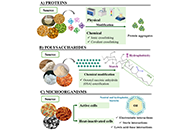 Pickering emulsions in food and nutraceutical technology: from delivering hydrophobic compounds to cutting-edge food applicationsOpen AccessReviewPickering emulsions have emerged as suitable alternatives to healthily and sustainably deliver unstable compounds, addressing the demands of consumers, increasingly concerned about the nutritional v...Lucía Cassani, Andrea Gomez-ZavagliaPublished: July 30, 2024 Explor Foods Foodomics. DOI: 10.37349/eff.2024.00044
Pickering emulsions in food and nutraceutical technology: from delivering hydrophobic compounds to cutting-edge food applicationsOpen AccessReviewPickering emulsions have emerged as suitable alternatives to healthily and sustainably deliver unstable compounds, addressing the demands of consumers, increasingly concerned about the nutritional v...Lucía Cassani, Andrea Gomez-ZavagliaPublished: July 30, 2024 Explor Foods Foodomics. DOI: 10.37349/eff.2024.00044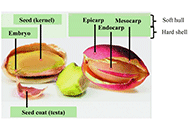 Nutritional and bioactive characterization of pistachio—a review with special focus on healthOpen AccessReviewThis paper reviews the nutritional quality and safety of edible farmed insects from the point of view of the Czech-Slovenian bilateral project: Quality, Safety and Authenticity of Insect Protein-bas...Juliana Ripari Garrido ... María Victoria SalinasPublished: July 26, 2024 Explor Foods Foodomics. DOI: 10.37349/eff.2024.00042
Nutritional and bioactive characterization of pistachio—a review with special focus on healthOpen AccessReviewThis paper reviews the nutritional quality and safety of edible farmed insects from the point of view of the Czech-Slovenian bilateral project: Quality, Safety and Authenticity of Insect Protein-bas...Juliana Ripari Garrido ... María Victoria SalinasPublished: July 26, 2024 Explor Foods Foodomics. DOI: 10.37349/eff.2024.00042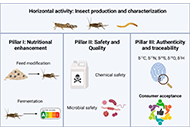 Quality, safety and authenticity of insect protein-based food and feed: insights from the INPROFF ProjectOpen AccessReviewThis paper reviews the nutritional quality and safety of edible farmed insects from the point of view of the Czech-Slovenian bilateral project: Quality, Safety and Authenticity of Insect Protein-based Food and Feed (INPROFF). Insects as a sustainable source of dietary protein for animal feed and even humans, when integrated into the European agrifood system, could offer a solution to Europe’s feed protein deficit and help alleviate environmental pressure from increasing protein demand, such as declining availability of land, water, marine and energy resources, the overuse of pesticides and reduced biodiversity. However, despite a growing interest in the European Union (EU) in farming edible insects, many economic, scientific, technological, and social barriers remain. In response, Slovenia, represented by the Jožef Stefan Institute, the Biotechnical Faculty of the University of Ljubljana, and Jata Emona d.o.o. (the leading supplier of feedstuffs for the Slovenian market), a country with no history of insect rearing but an interest in alternative protein, joined with the Czech University of Life Sciences Prague, representing the Czech Republic—a country with a history of insect rearing and research into edible insects—to establish INPROFF a three-year bilateral project that aims to close the knowledge gap regarding the quality and safety of insect-based products and boost the farmed insect food and feed value chain. Specifically, it comprises three thematic pillars: (P1) nutritional enhancement, (P2) safety and quality and (P3) authenticity, traceability, and consumer acceptance. The paper also discusses the gaps in the metrological challenges of analysing insects, which will be critical for ensuring safety, quality, and sustainability. The paper finds that although much work has been done, many exciting avenues remain for new research....David Heath ... Nives OgrincPublished: July 24, 2024 Explor Foods Foodomics. DOI: 10.37349/eff.2024.00041
Quality, safety and authenticity of insect protein-based food and feed: insights from the INPROFF ProjectOpen AccessReviewThis paper reviews the nutritional quality and safety of edible farmed insects from the point of view of the Czech-Slovenian bilateral project: Quality, Safety and Authenticity of Insect Protein-based Food and Feed (INPROFF). Insects as a sustainable source of dietary protein for animal feed and even humans, when integrated into the European agrifood system, could offer a solution to Europe’s feed protein deficit and help alleviate environmental pressure from increasing protein demand, such as declining availability of land, water, marine and energy resources, the overuse of pesticides and reduced biodiversity. However, despite a growing interest in the European Union (EU) in farming edible insects, many economic, scientific, technological, and social barriers remain. In response, Slovenia, represented by the Jožef Stefan Institute, the Biotechnical Faculty of the University of Ljubljana, and Jata Emona d.o.o. (the leading supplier of feedstuffs for the Slovenian market), a country with no history of insect rearing but an interest in alternative protein, joined with the Czech University of Life Sciences Prague, representing the Czech Republic—a country with a history of insect rearing and research into edible insects—to establish INPROFF a three-year bilateral project that aims to close the knowledge gap regarding the quality and safety of insect-based products and boost the farmed insect food and feed value chain. Specifically, it comprises three thematic pillars: (P1) nutritional enhancement, (P2) safety and quality and (P3) authenticity, traceability, and consumer acceptance. The paper also discusses the gaps in the metrological challenges of analysing insects, which will be critical for ensuring safety, quality, and sustainability. The paper finds that although much work has been done, many exciting avenues remain for new research....David Heath ... Nives OgrincPublished: July 24, 2024 Explor Foods Foodomics. DOI: 10.37349/eff.2024.00041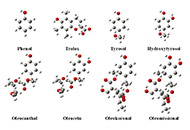 Metrological aspects of a gas-phase DFT/B3LYP quantum-chemical approach to prioritize radical scavenging activity among a group of olive oil phenolsOpen AccessOriginal ArticleAim: A protocol relying on quantum chemical calculations to assist prioritization of phenolic compounds as antioxidants in terms of hydrogen atom donation efficiency is presented. The use of reference compounds, an important metrological issue for a future harmonization and standardization of computational approaches in research is also considered. Methods: A density functional theory (DFT) approach, namely B3LYP/6-311G++(2d,2p)//B3LYP/6-31G in the gas-phase was used for structure optimization, frequency calculation and single point energy (SPE) calculation to obtain the bond dissociation enthalpy (BDE) value of the most active O-H of olive oil phenols. For some of them used as a test set and for comparison, BDE values were calculated using three more approaches, M05-2X in the gas-phase, Becke three-parameter Lee-Yang-Parr (B3LYP) and implicit solvent effects (n-heptane to model bulk oils) with the integral equation formalism version of the polarizable continuum model (IEF-PCM), Minnesota 05 functional with double nonlocal exchange (M05-2X) at a single step using 6-31G+(d) basis set and solvation model density (SMD) as solvation model. Phenol and Trolox were used as reference compounds for ΔBDE calculation. Results: The proposed protocol was faster by 1.35-, 1.6-, and 8.3-fold respectively than the other three and provided almost the same activity trend application to other type of olive oil phenols indicated that prioritization based on ΔBDE values was in accordance with the limited existing experimental findings in bulk oils, and the order of activity was generally in agreement with the structure-antioxidant activity criteria. Conclusions: Present findings highlighted the usefulness of quantum chemical calculations as a tool to screen/prioritize molecules with an established structure saving experimental effort and waste production. The expression of results relatively to phenol and Trolox BDE values, may assist comparisons among research findings and facilitate standardization. Based on the findings hydroxytyrosol and related compounds should be efficient hydrogen atom donors compared to other potent virgin olive oil phenols. ...Nikolaos Nenadis, Maria Z. TsimidouPublished: July 18, 2024 Explor Foods Foodomics. DOI: 10.37349/eff.2024.00040
Metrological aspects of a gas-phase DFT/B3LYP quantum-chemical approach to prioritize radical scavenging activity among a group of olive oil phenolsOpen AccessOriginal ArticleAim: A protocol relying on quantum chemical calculations to assist prioritization of phenolic compounds as antioxidants in terms of hydrogen atom donation efficiency is presented. The use of reference compounds, an important metrological issue for a future harmonization and standardization of computational approaches in research is also considered. Methods: A density functional theory (DFT) approach, namely B3LYP/6-311G++(2d,2p)//B3LYP/6-31G in the gas-phase was used for structure optimization, frequency calculation and single point energy (SPE) calculation to obtain the bond dissociation enthalpy (BDE) value of the most active O-H of olive oil phenols. For some of them used as a test set and for comparison, BDE values were calculated using three more approaches, M05-2X in the gas-phase, Becke three-parameter Lee-Yang-Parr (B3LYP) and implicit solvent effects (n-heptane to model bulk oils) with the integral equation formalism version of the polarizable continuum model (IEF-PCM), Minnesota 05 functional with double nonlocal exchange (M05-2X) at a single step using 6-31G+(d) basis set and solvation model density (SMD) as solvation model. Phenol and Trolox were used as reference compounds for ΔBDE calculation. Results: The proposed protocol was faster by 1.35-, 1.6-, and 8.3-fold respectively than the other three and provided almost the same activity trend application to other type of olive oil phenols indicated that prioritization based on ΔBDE values was in accordance with the limited existing experimental findings in bulk oils, and the order of activity was generally in agreement with the structure-antioxidant activity criteria. Conclusions: Present findings highlighted the usefulness of quantum chemical calculations as a tool to screen/prioritize molecules with an established structure saving experimental effort and waste production. The expression of results relatively to phenol and Trolox BDE values, may assist comparisons among research findings and facilitate standardization. Based on the findings hydroxytyrosol and related compounds should be efficient hydrogen atom donors compared to other potent virgin olive oil phenols. ...Nikolaos Nenadis, Maria Z. TsimidouPublished: July 18, 2024 Explor Foods Foodomics. DOI: 10.37349/eff.2024.00040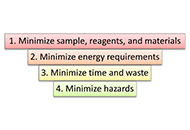 The role of liquid phase microextraction in plant and animal food analysisOpen AccessReviewFood samples require extensive sample preparations for instrumental analyses due to the complex matrices involved. Food safety regulatory agencies also require sample preparation procedures that are...John M. KokosaPublished: July 17, 2024 Explor Foods Foodomics. DOI: 10.37349/eff.2024.00038
The role of liquid phase microextraction in plant and animal food analysisOpen AccessReviewFood samples require extensive sample preparations for instrumental analyses due to the complex matrices involved. Food safety regulatory agencies also require sample preparation procedures that are...John M. KokosaPublished: July 17, 2024 Explor Foods Foodomics. DOI: 10.37349/eff.2024.00038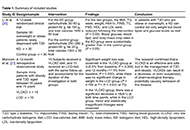 Effectiveness of ketogenic therapy in patients with obesity and diabetes: a narrative reviewOpen AccessReviewOver the past few decades, there has been a major increase in type 2 diabetes (T2D) prevalence, a long-term medical condition in which your body doesn't use insulin properly in most regions of the w...Paola Pellegrini ... Maria D’EliaPublished: July 17, 2024 Explor Foods Foodomics. DOI: 10.37349/eff.2024.00039
Effectiveness of ketogenic therapy in patients with obesity and diabetes: a narrative reviewOpen AccessReviewOver the past few decades, there has been a major increase in type 2 diabetes (T2D) prevalence, a long-term medical condition in which your body doesn't use insulin properly in most regions of the w...Paola Pellegrini ... Maria D’EliaPublished: July 17, 2024 Explor Foods Foodomics. DOI: 10.37349/eff.2024.00039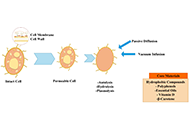 Encapsulation of hydrophobic compounds in yeast cells: methods, characterization, and applicationsOpen AccessReviewEncapsulation is a pivotal technique for protecting and enhancing the efficiency of sensitive natural bioactive substances, notably essential oils, vitamins, and phenolic compounds, widely used in...Deniz Günal-Köroğlu ... Esra CapanogluPublished: June 20, 2024 Explor Foods Foodomics. DOI: 10.37349/eff.2024.00037
Encapsulation of hydrophobic compounds in yeast cells: methods, characterization, and applicationsOpen AccessReviewEncapsulation is a pivotal technique for protecting and enhancing the efficiency of sensitive natural bioactive substances, notably essential oils, vitamins, and phenolic compounds, widely used in...Deniz Günal-Köroğlu ... Esra CapanogluPublished: June 20, 2024 Explor Foods Foodomics. DOI: 10.37349/eff.2024.00037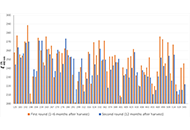 Building a database for the quality characteristics of the Protected Designation of Origin saffron Krokos Kozanis, considering international trade requirementsOpen AccessOriginal ArticleAim: Saffron, a precious spice deriving from the emblematic Crocus sativus L. cultivation, is a traditional product with high socio-economic and cultural value in Greece, especially in the region...Stella A. Ordoudi, Maria Z. TsimidouPublished: June 07, 2024 Explor Foods Foodomics. DOI: 10.37349/eff.2024.00036
Building a database for the quality characteristics of the Protected Designation of Origin saffron Krokos Kozanis, considering international trade requirementsOpen AccessOriginal ArticleAim: Saffron, a precious spice deriving from the emblematic Crocus sativus L. cultivation, is a traditional product with high socio-economic and cultural value in Greece, especially in the region...Stella A. Ordoudi, Maria Z. TsimidouPublished: June 07, 2024 Explor Foods Foodomics. DOI: 10.37349/eff.2024.00036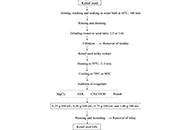 Full factorial design of the effects of coagulants and processing variables on the physicochemical quality and texture profile analysis of kenaf seed tofuOpen AccessOriginal ArticleAim: Kenaf (Hibiscus cannabinus) is an herbaceous plant of economic significance, the seed is rich in essential nutrients and has the potential for the production of protein-based products. This ...Shafa’atu Giwa Ibrahim, Roselina KarimPublished: June 04, 2024 Explor Foods Foodomics. DOI: 10.37349/eff.2024.00035
Full factorial design of the effects of coagulants and processing variables on the physicochemical quality and texture profile analysis of kenaf seed tofuOpen AccessOriginal ArticleAim: Kenaf (Hibiscus cannabinus) is an herbaceous plant of economic significance, the seed is rich in essential nutrients and has the potential for the production of protein-based products. This ...Shafa’atu Giwa Ibrahim, Roselina KarimPublished: June 04, 2024 Explor Foods Foodomics. DOI: 10.37349/eff.2024.00035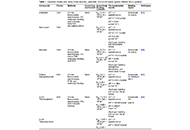 Current analytical methods and applications used in the insight of serum proteins interactions with various food additives, pesticides, and contaminantsOpen AccessReviewIn recent years, many societies have expressed increasing apprehension regarding the potential negative impacts of food additives, pesticides, and environmental contaminants on human health. ...Cem Erkmen, Md. Zahirul KabirPublished: May 24, 2024 Explor Foods Foodomics. DOI: 10.37349/eff.2024.00034
Current analytical methods and applications used in the insight of serum proteins interactions with various food additives, pesticides, and contaminantsOpen AccessReviewIn recent years, many societies have expressed increasing apprehension regarding the potential negative impacts of food additives, pesticides, and environmental contaminants on human health. ...Cem Erkmen, Md. Zahirul KabirPublished: May 24, 2024 Explor Foods Foodomics. DOI: 10.37349/eff.2024.00034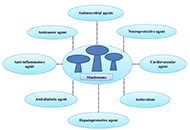 A concise review: edible mushroom and their medicinal significanceOpen AccessReviewIn many areas of human life, including food, health, culture, and religion, mushrooms have had a significant impact. Most people eat mushrooms for their flavor and texture. Recently, they have gained...Jaya P. Ambhore ... Bhavana A. ShendePublished: May 17, 2024 Explor Foods Foodomics. DOI: 10.37349/eff.2024.00033
A concise review: edible mushroom and their medicinal significanceOpen AccessReviewIn many areas of human life, including food, health, culture, and religion, mushrooms have had a significant impact. Most people eat mushrooms for their flavor and texture. Recently, they have gained...Jaya P. Ambhore ... Bhavana A. ShendePublished: May 17, 2024 Explor Foods Foodomics. DOI: 10.37349/eff.2024.00033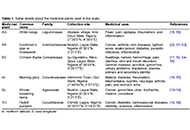 Metals and metalloid in medicinal plants: occurrence and risk assessment to human healthOpen AccessOriginal ArticleAim: This study was aimed at determining the levels of trace elements in six medicinal plants of tropical origin. Methods: The levels of As, Cd, Co, Cu, Fe, Mn, Ni, Pb, and Zn in Albizia gl...Joseph A. Adeyemi ... Fernando BarbosaPublished: April 26, 2024 Explor Foods Foodomics. DOI: 10.37349/eff.2024.00032
Metals and metalloid in medicinal plants: occurrence and risk assessment to human healthOpen AccessOriginal ArticleAim: This study was aimed at determining the levels of trace elements in six medicinal plants of tropical origin. Methods: The levels of As, Cd, Co, Cu, Fe, Mn, Ni, Pb, and Zn in Albizia gl...Joseph A. Adeyemi ... Fernando BarbosaPublished: April 26, 2024 Explor Foods Foodomics. DOI: 10.37349/eff.2024.00032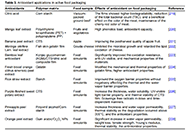 Recent advances in nano-related natural antioxidants, their extraction methods and applications in the food industryOpen AccessReviewNatural antioxidants, such as phenolic compounds, carotenoids, vitamins, and microelements, are predominant in fruits, vegetables, herbs, and spices. The accretion interest of consumers in utilizing...Ayla Elmi Kashtiban ... Sayna ZahediniaPublished: April 19, 2024 Explor Foods Foodomics. DOI: 10.37349/eff.2024.00030
Recent advances in nano-related natural antioxidants, their extraction methods and applications in the food industryOpen AccessReviewNatural antioxidants, such as phenolic compounds, carotenoids, vitamins, and microelements, are predominant in fruits, vegetables, herbs, and spices. The accretion interest of consumers in utilizing...Ayla Elmi Kashtiban ... Sayna ZahediniaPublished: April 19, 2024 Explor Foods Foodomics. DOI: 10.37349/eff.2024.00030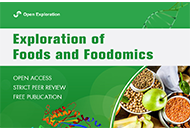 Roles of nutrition in minimizing stress-related infertility: a narrative reviewOpen AccessReviewInfertility is a crucial and common health issue worldwide, that affects people both physiologically and psychosocially. The condition is described as the disease of the reproductive system of eithe...Luxita Sharma, Dhananjay SharmaPublished: April 19, 2024 Explor Foods Foodomics. DOI: 10.37349/eff.2024.00031
Roles of nutrition in minimizing stress-related infertility: a narrative reviewOpen AccessReviewInfertility is a crucial and common health issue worldwide, that affects people both physiologically and psychosocially. The condition is described as the disease of the reproductive system of eithe...Luxita Sharma, Dhananjay SharmaPublished: April 19, 2024 Explor Foods Foodomics. DOI: 10.37349/eff.2024.00031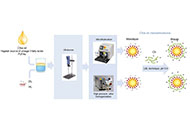 Development of chia oil-in-water nanoemulsions using different homogenization technologies and the layer-by-layer techniqueOpen AccessOriginal ArticleAim: The present study investigates the influence of various homogenization techniques, namely high-pressure valve homogenization and microfluidization, and different forms of modified sunflower ...Luciana M. Julio ... Vanesa Y. IxtainaPublished: April 10, 2024 Explor Foods Foodomics. DOI: 10.37349/eff.2024.00029
Development of chia oil-in-water nanoemulsions using different homogenization technologies and the layer-by-layer techniqueOpen AccessOriginal ArticleAim: The present study investigates the influence of various homogenization techniques, namely high-pressure valve homogenization and microfluidization, and different forms of modified sunflower ...Luciana M. Julio ... Vanesa Y. IxtainaPublished: April 10, 2024 Explor Foods Foodomics. DOI: 10.37349/eff.2024.00029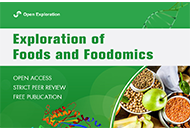 High intake of sunflower seeds and low mortality from Alzheimer’s disease and dementia: is there a correlation?Open AccessPerspectiveAlzheimer’s disease, a progressive and irreversible neurodegenerative disorder, is the most prevalent form of dementia with an increasingly growing incidence rate worldwide. As no effective therap...Katrin SakPublished: March 18, 2024 Explor Foods Foodomics. DOI: 10.37349/eff.2024.00028
High intake of sunflower seeds and low mortality from Alzheimer’s disease and dementia: is there a correlation?Open AccessPerspectiveAlzheimer’s disease, a progressive and irreversible neurodegenerative disorder, is the most prevalent form of dementia with an increasingly growing incidence rate worldwide. As no effective therap...Katrin SakPublished: March 18, 2024 Explor Foods Foodomics. DOI: 10.37349/eff.2024.00028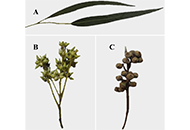 Ellagitannins from Eucalyptus camaldulensis and their potential use in the food industryOpen AccessReviewPlants play a key role in the treatment and prevention of diseases since ancient times. Eucalyptus has been traditionally used in the treatment of conditions related to the respiratory system, such ...Eliseo Sánchez-Loredo ... Juan A. Ascacio-ValdésPublished: February 27, 2024 Explor Foods Foodomics. DOI: 10.37349/eff.2024.00027
Ellagitannins from Eucalyptus camaldulensis and their potential use in the food industryOpen AccessReviewPlants play a key role in the treatment and prevention of diseases since ancient times. Eucalyptus has been traditionally used in the treatment of conditions related to the respiratory system, such ...Eliseo Sánchez-Loredo ... Juan A. Ascacio-ValdésPublished: February 27, 2024 Explor Foods Foodomics. DOI: 10.37349/eff.2024.00027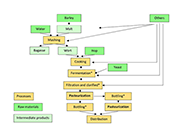 Increasing of craft beer shelf life, with and without alcohol, through immersion batch pasteurizationOpen AccessOriginal ArticleAim: This study delves into the pasteurization process for craft beer, exploring its impact on containers and closures. Focusing on small breweries, it have been assess various treatments and fin...Rut Domínguez ... Manuel DomínguezPublished: February 26, 2024 Explor Foods Foodomics. DOI: 10.37349/eff.2024.00025
Increasing of craft beer shelf life, with and without alcohol, through immersion batch pasteurizationOpen AccessOriginal ArticleAim: This study delves into the pasteurization process for craft beer, exploring its impact on containers and closures. Focusing on small breweries, it have been assess various treatments and fin...Rut Domínguez ... Manuel DomínguezPublished: February 26, 2024 Explor Foods Foodomics. DOI: 10.37349/eff.2024.00025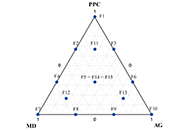 Rice bran oil-in-water optimized emulsions for the development of plant-based foods and beveragesOpen AccessOriginal ArticleAim: This work aimed to develop rice bran oil-in-water (O/W) emulsions, stabilized with different mixtures of pea protein concentrate (PPC), Arabic gum (AG), and maltodextrin (MD), as the basis f...Lucas O. Benitez ... Juan M. CastagniniPublished: February 27, 2024 Explor Foods Foodomics. DOI: 10.37349/eff.2024.00026
Rice bran oil-in-water optimized emulsions for the development of plant-based foods and beveragesOpen AccessOriginal ArticleAim: This work aimed to develop rice bran oil-in-water (O/W) emulsions, stabilized with different mixtures of pea protein concentrate (PPC), Arabic gum (AG), and maltodextrin (MD), as the basis f...Lucas O. Benitez ... Juan M. CastagniniPublished: February 27, 2024 Explor Foods Foodomics. DOI: 10.37349/eff.2024.00026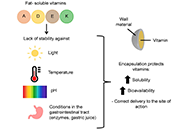 Leguminous fractions as encapsulating agents of fat-soluble vitaminsOpen AccessReviewVitamins are essential micronutrients for the functioning of the human body. Vitamins can be classified as water-soluble and fat-soluble, and are obtained through diet or supplementation. Fat-solubl...Angela Daniela Carboni ... María Cecilia PuppoPublished: February 23, 2024 Explor Foods Foodomics. DOI: 10.37349/eff.2024.00024
Leguminous fractions as encapsulating agents of fat-soluble vitaminsOpen AccessReviewVitamins are essential micronutrients for the functioning of the human body. Vitamins can be classified as water-soluble and fat-soluble, and are obtained through diet or supplementation. Fat-solubl...Angela Daniela Carboni ... María Cecilia PuppoPublished: February 23, 2024 Explor Foods Foodomics. DOI: 10.37349/eff.2024.00024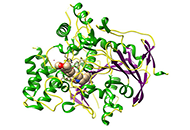 Assessment of the health benefits of phytochemicals in Cynometra cauliflora based on an in silico study against Alzheimer’s diseaseOpen AccessOriginal ArticleAim: Cynometra cauliflora (namnam) belongs to the family Fabaceae and is native to eastern Peninsular Malaysia. It grows well with an annual rainfall of 1,500–2,000 mm. Even though a consider...Jagath Illangasinghe ... Viduranga Yashasvi WaisundaraPublished: January 23, 2024 Explor Foods Foodomics. DOI: 10.37349/eff.2024.00023
Assessment of the health benefits of phytochemicals in Cynometra cauliflora based on an in silico study against Alzheimer’s diseaseOpen AccessOriginal ArticleAim: Cynometra cauliflora (namnam) belongs to the family Fabaceae and is native to eastern Peninsular Malaysia. It grows well with an annual rainfall of 1,500–2,000 mm. Even though a consider...Jagath Illangasinghe ... Viduranga Yashasvi WaisundaraPublished: January 23, 2024 Explor Foods Foodomics. DOI: 10.37349/eff.2024.00023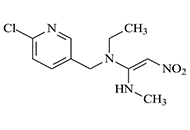 Determination of neonicotinoid pesticides nitenpyram and dinotefuran by electroanalytical methodsOpen AccessReviewNitenpyram (NIT) and dinotefuran (DNF) are neonicotinoid pesticides commonly used in the production and storage of agricultural products, as well as in forests and gardens, for the purpose of protec...Dilek KulPublished: December 29, 2023 Explor Foods Foodomics. DOI: 10.37349/eff.2023.00020
Determination of neonicotinoid pesticides nitenpyram and dinotefuran by electroanalytical methodsOpen AccessReviewNitenpyram (NIT) and dinotefuran (DNF) are neonicotinoid pesticides commonly used in the production and storage of agricultural products, as well as in forests and gardens, for the purpose of protec...Dilek KulPublished: December 29, 2023 Explor Foods Foodomics. DOI: 10.37349/eff.2023.00020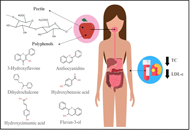 Effect of chronic apple consumption (Malus domestica Borkh.) on the lipid profile of adults with dyslipidemia: a systematic reviewOpen AccessSystematic ReviewAim: Cardiovascular disease (CVD) are among the main causes of death worldwide and dyslipidemias account for one of the risk factors for these diseases. Habitual apple consumption appears to be i...Luciana Melo de Farias ... Maria do Carmo de Carvalho e MartinsPublished: December 29, 2023 Explor Foods Foodomics. DOI: 10.37349/eff.2023.00022
Effect of chronic apple consumption (Malus domestica Borkh.) on the lipid profile of adults with dyslipidemia: a systematic reviewOpen AccessSystematic ReviewAim: Cardiovascular disease (CVD) are among the main causes of death worldwide and dyslipidemias account for one of the risk factors for these diseases. Habitual apple consumption appears to be i...Luciana Melo de Farias ... Maria do Carmo de Carvalho e MartinsPublished: December 29, 2023 Explor Foods Foodomics. DOI: 10.37349/eff.2023.00022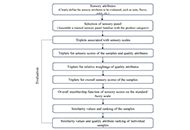 Application of fuzzy logic techniques for sensory evaluation of plant-based extrudates fortified with bioactive compoundsOpen AccessOriginal ArticleAim: This study aims to evaluate the sensory profile of corn-based extrudates fortified with phytosterol and pea protein isolates (PPI) using the fuzzy logic technique to assess similarity values...Mekala Pavani ... Sushil Kumar SinghPublished: December 29, 2023 Explor Foods Foodomics. DOI: 10.37349/eff.2023.00021
Application of fuzzy logic techniques for sensory evaluation of plant-based extrudates fortified with bioactive compoundsOpen AccessOriginal ArticleAim: This study aims to evaluate the sensory profile of corn-based extrudates fortified with phytosterol and pea protein isolates (PPI) using the fuzzy logic technique to assess similarity values...Mekala Pavani ... Sushil Kumar SinghPublished: December 29, 2023 Explor Foods Foodomics. DOI: 10.37349/eff.2023.00021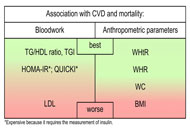 Evaluation of the most common parameters used to describe cardiovascular risk and the influence of ketogenic and Mediterranean dietOpen AccessReviewCardiovascular disease (CVD) stands as the leading global cause of mortality, underscoring the critical need for practical tools to assess CVD risk at an early stage. An accessible approach involves...Leo Karl Hanke ... Paola MolettieriPublished: December 28, 2023 Explor Foods Foodomics. DOI: 10.37349/eff.2023.00019
Evaluation of the most common parameters used to describe cardiovascular risk and the influence of ketogenic and Mediterranean dietOpen AccessReviewCardiovascular disease (CVD) stands as the leading global cause of mortality, underscoring the critical need for practical tools to assess CVD risk at an early stage. An accessible approach involves...Leo Karl Hanke ... Paola MolettieriPublished: December 28, 2023 Explor Foods Foodomics. DOI: 10.37349/eff.2023.00019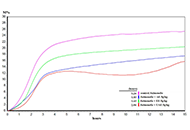 Broccoli by-product extract as a functional ingredient: food applicationOpen AccessOriginal ArticleAim: Food production demand has been promoting an increase in the generation of agro-industrial waste. Food industry waste can contain compounds with added value that, if properly extracted and u...David Q. Martínez ... Presentación GarcíaPublished: October 31, 2023 Explor Foods Foodomics. DOI: 10.37349/eff.2023.00018
Broccoli by-product extract as a functional ingredient: food applicationOpen AccessOriginal ArticleAim: Food production demand has been promoting an increase in the generation of agro-industrial waste. Food industry waste can contain compounds with added value that, if properly extracted and u...David Q. Martínez ... Presentación GarcíaPublished: October 31, 2023 Explor Foods Foodomics. DOI: 10.37349/eff.2023.00018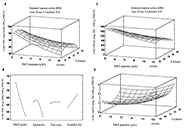 Exploring green extraction methods to obtain polyphenols from partially defatted chia (Salvia hispanica L.) flourOpen AccessOriginal ArticleAim: The extraction of polyphenols is commonly accomplished using conventional techniques such as solid-liquid and liquid-liquid extraction, which are associated with the use of high quantities o...Micaela Antón ... Rafael BorneoPublished: October 31, 2023 Explor Foods Foodomics. DOI: 10.37349/eff.2023.00017
Exploring green extraction methods to obtain polyphenols from partially defatted chia (Salvia hispanica L.) flourOpen AccessOriginal ArticleAim: The extraction of polyphenols is commonly accomplished using conventional techniques such as solid-liquid and liquid-liquid extraction, which are associated with the use of high quantities o...Micaela Antón ... Rafael BorneoPublished: October 31, 2023 Explor Foods Foodomics. DOI: 10.37349/eff.2023.00017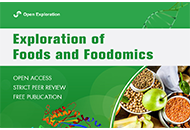 Olive oil, fruit and leaves in diabetes mellitus type 2 treatmentOpen AccessReviewThe Mediterranean dietary pattern, where extra virgin olive oil (EVOO) takes the central spot, is related to longer life expectancy and lower risk of a number of non-communicable diseases, including...Mario Nosić ... Ines BanjariPublished: October 29, 2023 Explor Foods Foodomics. DOI: 10.37349/eff.2023.00015
Olive oil, fruit and leaves in diabetes mellitus type 2 treatmentOpen AccessReviewThe Mediterranean dietary pattern, where extra virgin olive oil (EVOO) takes the central spot, is related to longer life expectancy and lower risk of a number of non-communicable diseases, including...Mario Nosić ... Ines BanjariPublished: October 29, 2023 Explor Foods Foodomics. DOI: 10.37349/eff.2023.00015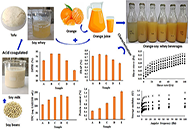 Development of soy whey fortified orange juice beverages: their physicochemical, rheological, antioxidant, and sensory propertiesOpen AccessOriginal ArticleAim: Soy whey is a byproduct of tofu production and is being discarded after tofu preparation. However, soy whey is a rich source of phytochemicals, minerals, and protein. The present study was c...Hilal Ahmad Punoo ... Andleeb MuzaffarPublished: October 29, 2023 Explor Foods Foodomics. DOI: 10.37349/eff.2023.00016
Development of soy whey fortified orange juice beverages: their physicochemical, rheological, antioxidant, and sensory propertiesOpen AccessOriginal ArticleAim: Soy whey is a byproduct of tofu production and is being discarded after tofu preparation. However, soy whey is a rich source of phytochemicals, minerals, and protein. The present study was c...Hilal Ahmad Punoo ... Andleeb MuzaffarPublished: October 29, 2023 Explor Foods Foodomics. DOI: 10.37349/eff.2023.00016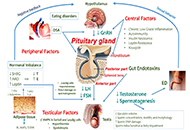 Male obesity secondary hypogonadism: effectiveness of ketogenic diet on testicular functionOpen AccessReviewEpidemiological studies have reported an association between obesity/metabolic syndrome (MetS) and male reproductive disorders. Endocrine dysfunctions, direct testicular damage, chronic low-grade in...Giulia Izzo ... Mario VitalePublished: October 29, 2023 Explor Foods Foodomics. DOI: 10.37349/eff.2023.00014
Male obesity secondary hypogonadism: effectiveness of ketogenic diet on testicular functionOpen AccessReviewEpidemiological studies have reported an association between obesity/metabolic syndrome (MetS) and male reproductive disorders. Endocrine dysfunctions, direct testicular damage, chronic low-grade in...Giulia Izzo ... Mario VitalePublished: October 29, 2023 Explor Foods Foodomics. DOI: 10.37349/eff.2023.00014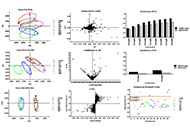 Investigation the spatial distribution of polyphenols and metabolomic profiling of appleOpen AccessOriginal ArticleAim: In this study, Polyphenol and chemical profiles in core, pulp, and peel of 7 apple varieties [Fuji (FS), Qinguan (QG), Qingping (QP), Jinshuai (JS), Gala (GL), Changmiou (CMO), and Huahong (...Xuan Li ... Jinfeng BiPublished: August 31, 2023 Explor Foods Foodomics. DOI: 10.37349/eff.2023.00013
Investigation the spatial distribution of polyphenols and metabolomic profiling of appleOpen AccessOriginal ArticleAim: In this study, Polyphenol and chemical profiles in core, pulp, and peel of 7 apple varieties [Fuji (FS), Qinguan (QG), Qingping (QP), Jinshuai (JS), Gala (GL), Changmiou (CMO), and Huahong (...Xuan Li ... Jinfeng BiPublished: August 31, 2023 Explor Foods Foodomics. DOI: 10.37349/eff.2023.00013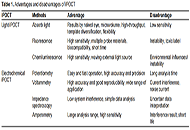 Intelligent point of care test for food safety via a smartphoneOpen AccessReviewThe on-site, rapid, and intelligence detection methods are the wave in food safety. Recently, intelligent point-of-care test (iPOCT) methods serve as a promising alternative for advanced monitoring ...Le Zhang ... Zhaowei ZhangPublished: August 30, 2023 Explor Foods Foodomics. DOI: 10.37349/eff.2023.00012
Intelligent point of care test for food safety via a smartphoneOpen AccessReviewThe on-site, rapid, and intelligence detection methods are the wave in food safety. Recently, intelligent point-of-care test (iPOCT) methods serve as a promising alternative for advanced monitoring ...Le Zhang ... Zhaowei ZhangPublished: August 30, 2023 Explor Foods Foodomics. DOI: 10.37349/eff.2023.00012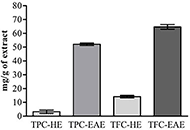 Azadirachta indica A. Juss (neem) phenolic extract inhibits human B-lymphoblastoid cells growth via cell cycle arrest, apoptosis induction, and DNA damageOpen AccessOriginal ArticleAim: As far as is known, the pharmaceutical effects of neem on human B-lymphoblastoid (TK6) cells have not been studied until now. Hence, the present study aimed to obtain neem phenolic extracts ...Klebson Silva Santos ... Maria Beatriz Pinto Prior OliveiraPublished: August 29, 2023 Explor Foods Foodomics. DOI: 10.37349/eff.2023.00011
Azadirachta indica A. Juss (neem) phenolic extract inhibits human B-lymphoblastoid cells growth via cell cycle arrest, apoptosis induction, and DNA damageOpen AccessOriginal ArticleAim: As far as is known, the pharmaceutical effects of neem on human B-lymphoblastoid (TK6) cells have not been studied until now. Hence, the present study aimed to obtain neem phenolic extracts ...Klebson Silva Santos ... Maria Beatriz Pinto Prior OliveiraPublished: August 29, 2023 Explor Foods Foodomics. DOI: 10.37349/eff.2023.00011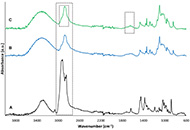 Isolation, characterization, and encapsulation of a lupeol-rich fraction obtained from the hexanic extract of Coccoloba uvifera L. leavesOpen AccessOriginal ArticleAim: This study aimed to isolate, characterize, and encapsulate a lupeol-rich fraction obtained from the hexanic extract of Coccoloba uvifera L. leaves to evaluate its potential use in nutraceuti...Carla N. Cruz-Salas ... Juan A. Ragazzo-SánchezPublished: August 28, 2023 Explor Foods Foodomics. DOI: 10.37349/eff.2023.00010
Isolation, characterization, and encapsulation of a lupeol-rich fraction obtained from the hexanic extract of Coccoloba uvifera L. leavesOpen AccessOriginal ArticleAim: This study aimed to isolate, characterize, and encapsulate a lupeol-rich fraction obtained from the hexanic extract of Coccoloba uvifera L. leaves to evaluate its potential use in nutraceuti...Carla N. Cruz-Salas ... Juan A. Ragazzo-SánchezPublished: August 28, 2023 Explor Foods Foodomics. DOI: 10.37349/eff.2023.00010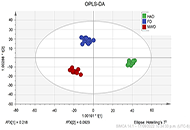 1H NMR-based metabolomics of cacao pod husk: profile comparison of three drying treatmentsOpen AccessOriginal ArticleAim: The aim of this study is to apply untargeted proton nuclear magnetic resonance (1H NMR) and chemometric analysis to obtain the cacao pod husk (CPH) fingerprint and evaluate the effect of deh...Demelza Nayelli Villalón-López ... Lourdes Valadez-CarmonaPublished: August 23, 2023 Explor Foods Foodomics. DOI: 10.37349/eff.2023.00009
1H NMR-based metabolomics of cacao pod husk: profile comparison of three drying treatmentsOpen AccessOriginal ArticleAim: The aim of this study is to apply untargeted proton nuclear magnetic resonance (1H NMR) and chemometric analysis to obtain the cacao pod husk (CPH) fingerprint and evaluate the effect of deh...Demelza Nayelli Villalón-López ... Lourdes Valadez-CarmonaPublished: August 23, 2023 Explor Foods Foodomics. DOI: 10.37349/eff.2023.00009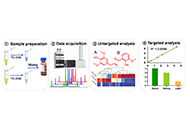 Untargeted and quantitative analyses of amine and phenol compounds in Baijiu via chemical isotope labelingOpen AccessOriginal ArticleAim: The aim of this study is to comprehensively investigate the distribution of amine and phenol compounds in different flavors of Baijiu. Methods: 12C-/13C-dansyl chloride labeling was ...Xiaoyu Xie ... Guowang XuPublished: June 30, 2023 Explor Foods Foodomics. DOI: 10.37349/eff.2023.00007
Untargeted and quantitative analyses of amine and phenol compounds in Baijiu via chemical isotope labelingOpen AccessOriginal ArticleAim: The aim of this study is to comprehensively investigate the distribution of amine and phenol compounds in different flavors of Baijiu. Methods: 12C-/13C-dansyl chloride labeling was ...Xiaoyu Xie ... Guowang XuPublished: June 30, 2023 Explor Foods Foodomics. DOI: 10.37349/eff.2023.00007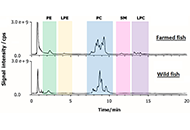 Untargeted lipidomics for evaluating fish authenticity: the case of wild-caught and farmed species of Sparus aurataOpen AccessOriginal ArticleAim: This study aims to develop sensitive and reliable analytical technologies to enable the distinction between wild-caught and farmed fish through appropriate molecular markers to protect consu...Sara Granafei ... Tommaso R.I. CataldiPublished: June 30, 2023 Explor Foods Foodomics. DOI: 10.37349/eff.2023.00008
Untargeted lipidomics for evaluating fish authenticity: the case of wild-caught and farmed species of Sparus aurataOpen AccessOriginal ArticleAim: This study aims to develop sensitive and reliable analytical technologies to enable the distinction between wild-caught and farmed fish through appropriate molecular markers to protect consu...Sara Granafei ... Tommaso R.I. CataldiPublished: June 30, 2023 Explor Foods Foodomics. DOI: 10.37349/eff.2023.00008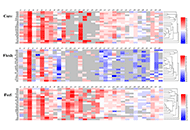 Correlation distance of browning characteristic and polyphenol distribution in apple slices from 20 Chinese cultivarsOpen AccessOriginal ArticleAim: The aim of this study is to investigate the polyphenol composition and distribution in the core, flesh, and peel of 20 apple varieties from China and its relation with browning characteristi...Wenyue Wang ... Jinfeng BiPublished: June 08, 2023 Explor Foods Foodomics. DOI: 10.37349/eff.2023.00006
Correlation distance of browning characteristic and polyphenol distribution in apple slices from 20 Chinese cultivarsOpen AccessOriginal ArticleAim: The aim of this study is to investigate the polyphenol composition and distribution in the core, flesh, and peel of 20 apple varieties from China and its relation with browning characteristi...Wenyue Wang ... Jinfeng BiPublished: June 08, 2023 Explor Foods Foodomics. DOI: 10.37349/eff.2023.00006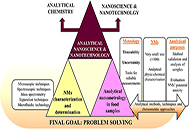 Monitoring nanomaterials in food: a critical overview, perspectives, and challengesOpen AccessReviewNanoscience and nanotechnology have experienced a dizzying development in recent years, which undoubtedly contributes to various fields of human activity such as biotechnology, engineering, medical ...Natalia Villamayor ... Ángel RíosPublished: April 27, 2023 Explor Foods Foodomics. DOI: 10.37349/eff.2023.00005
Monitoring nanomaterials in food: a critical overview, perspectives, and challengesOpen AccessReviewNanoscience and nanotechnology have experienced a dizzying development in recent years, which undoubtedly contributes to various fields of human activity such as biotechnology, engineering, medical ...Natalia Villamayor ... Ángel RíosPublished: April 27, 2023 Explor Foods Foodomics. DOI: 10.37349/eff.2023.00005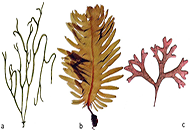 Atlantic algae as food and their extractsOpen AccessReviewAmong the species of the rich algological flora of the North Atlantic, some can be used for direct consumption in human food, although few are currently cultivated on a large scale and/or marketed f...Leonel PereiraPublished: April 27, 2023 Explor Foods Foodomics. DOI: 10.37349/eff.2023.00003
Atlantic algae as food and their extractsOpen AccessReviewAmong the species of the rich algological flora of the North Atlantic, some can be used for direct consumption in human food, although few are currently cultivated on a large scale and/or marketed f...Leonel PereiraPublished: April 27, 2023 Explor Foods Foodomics. DOI: 10.37349/eff.2023.00003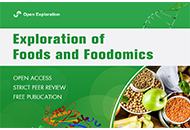 Green subcritical water extraction of Mentha x rotundifolia leaves collected in different annuitiesOpen AccessOriginal ArticleAim: In this work, the development for the first time of a green and efficient method to obtain bioactive extracts from Mentha x rotundifolia leaves has been investigated. Methods: The effi...María Jesús García-Sarrió ... María Luz SanzPublished: April 27, 2023 Explor Foods Foodomics. DOI: 10.37349/eff.2023.00004
Green subcritical water extraction of Mentha x rotundifolia leaves collected in different annuitiesOpen AccessOriginal ArticleAim: In this work, the development for the first time of a green and efficient method to obtain bioactive extracts from Mentha x rotundifolia leaves has been investigated. Methods: The effi...María Jesús García-Sarrió ... María Luz SanzPublished: April 27, 2023 Explor Foods Foodomics. DOI: 10.37349/eff.2023.00004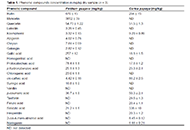 Phytochemical screening of Psidium guajava and Carica papaya leaves aqueous extracts cultivated in Greece and their potential as health boostersOpen AccessOriginal ArticleAim: The scope of the present study was to investigate the phytochemical profile of Psidium guajava and Carica papaya leaves aqueous extracts, from plants cultivated on Crete island in Greece. ...Dimitrios D. Ntakoulas ... Charalampos ProestosPublished: April 26, 2023 Explor Foods Foodomics. DOI: 10.37349/eff.2023.00002
Phytochemical screening of Psidium guajava and Carica papaya leaves aqueous extracts cultivated in Greece and their potential as health boostersOpen AccessOriginal ArticleAim: The scope of the present study was to investigate the phytochemical profile of Psidium guajava and Carica papaya leaves aqueous extracts, from plants cultivated on Crete island in Greece. ...Dimitrios D. Ntakoulas ... Charalampos ProestosPublished: April 26, 2023 Explor Foods Foodomics. DOI: 10.37349/eff.2023.00002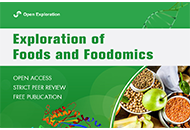 Exploration of Foods and Foodomics: a new adventureOpen AccessEditorialAlejandro Cifuentes, Elena IbáñezPublished: March 01, 2023 Explor Foods Foodomics. DOI: 10.37349/eff.2022.00001
Exploration of Foods and Foodomics: a new adventureOpen AccessEditorialAlejandro Cifuentes, Elena IbáñezPublished: March 01, 2023 Explor Foods Foodomics. DOI: 10.37349/eff.2022.00001 -